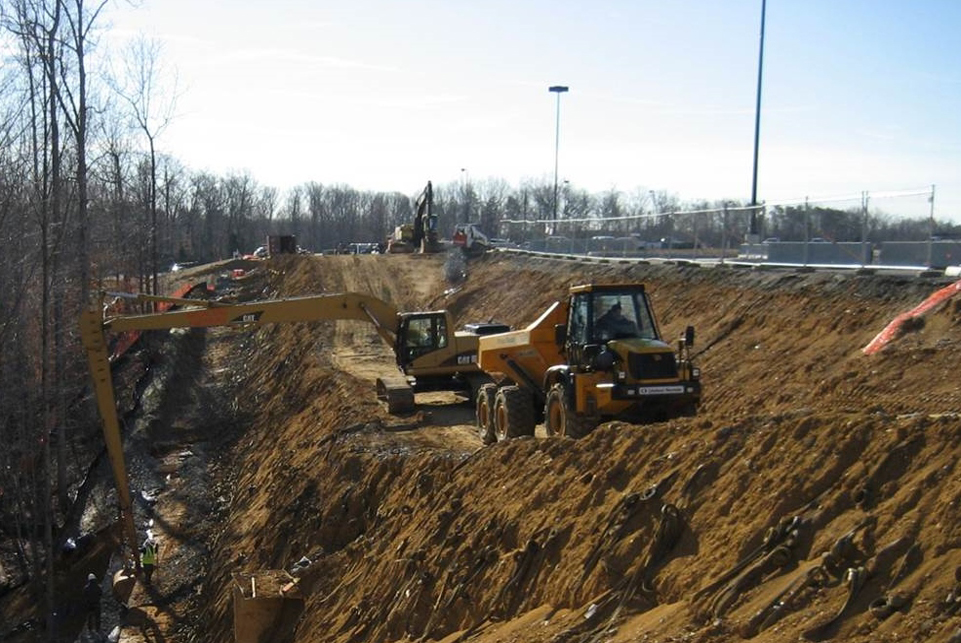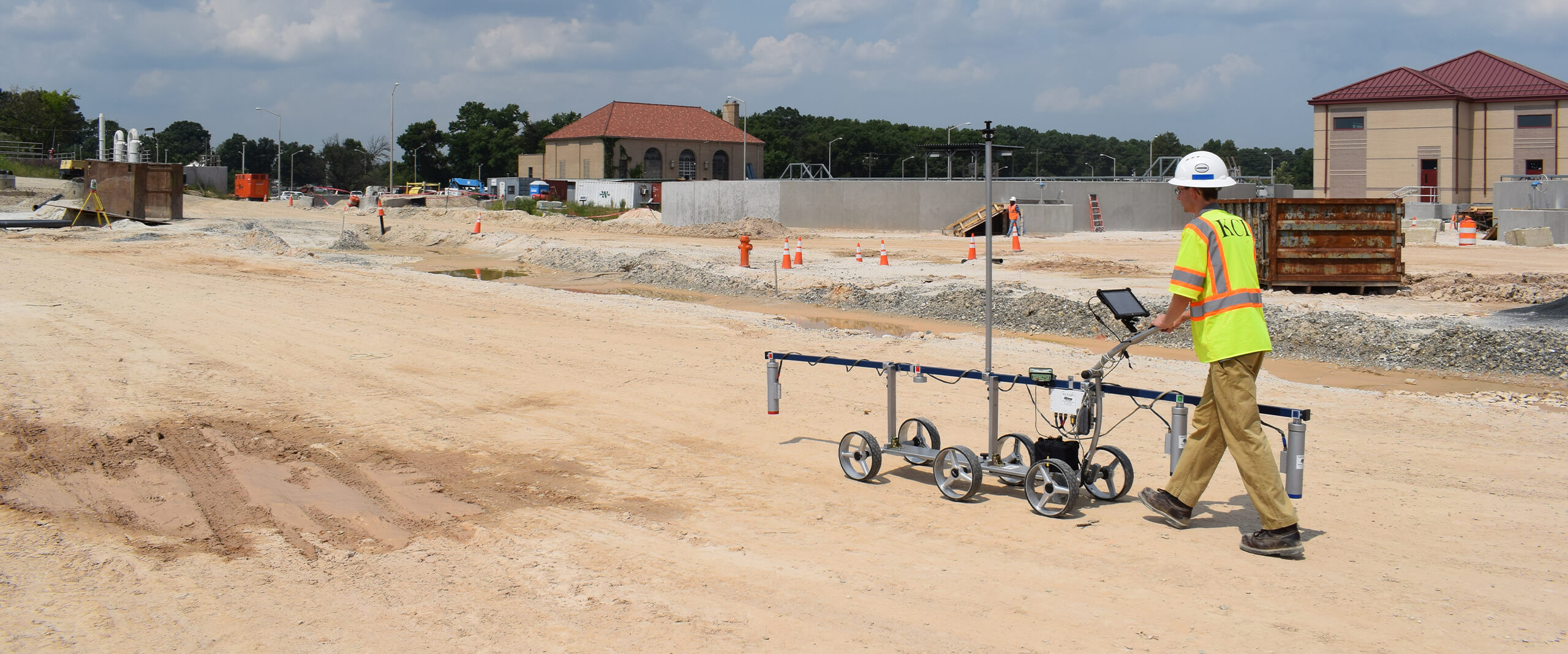Patterns Influencing the Future of Geotechnical Eng Practices
Patterns Influencing the Future of Geotechnical Eng Practices
Blog Article
The Important Contributions of Geotechnical Designers in Evaluating Soil Habits and Foundation Design for Lasting Facilities Development
Geotechnical engineers offer as a cornerstone in the realm of lasting infrastructure development, where their competence in evaluating dirt habits directly influences the safety and longevity of structures. By using innovative methods such as Common Penetration Tests and Cone Infiltration Testing, they meticulously assess dirt properties, causing informed decisions on structure design. These analyses not only minimize dangers related to differential settlement however additionally pave the means for cutting-edge, eco conscious methods. As we explore the vital duty they play, the implications of their contributions raise important inquiries concerning the future of infrastructure strength and sustainability.
Duty of Geotechnical Engineers

In enhancement to website investigations, geotechnical engineers review potential dangers such as dirt liquefaction, slope stability, and groundwater issues. They apply advanced engineering concepts to create remedies that alleviate these risks, making certain that designs adhere to relevant codes and requirements. Their job usually includes cooperation with other engineering techniques, designers, and environmental researchers to produce incorporated methods to infrastructure development.
Furthermore, geotechnical designers contribute to sustainable methods by advertising the use of products and techniques that decrease ecological effect. With their comprehensive understanding of soil mechanics and geology, they play an essential role in fostering secure, resistant, and lasting framework that fulfills the demands of society while safeguarding the setting.
Dirt Behavior Assessment Strategies
Comprehending soil actions is essential to informed decision-making in geotechnical design, as it directly influences the style and construction procedures. Different analysis strategies are employed to examine soil residential properties, ensuring exact predictions of its efficiency under various loading conditions.
One main approach is the Conventional Penetration Examination (SPT), which offers understandings into soil density and uniformity with the resistance encountered throughout infiltration. Cone Penetration Screening (CPT) provides a continual account of dirt stratification and in-situ strength specifications, enabling a much more thorough understanding of subsurface problems.
Lab tests, such as Atterberg restrictions, unconfined compressive strength, and triaxial tests, are crucial for defining soil habits under controlled conditions. These examinations help with the determination of crucial parameters, consisting of shear stamina, compressibility, and leaks in the structure.

Foundation Design Concepts
Structure style concepts are essential for ensuring the stability and longevity of structures, as they dictate how tons are transferred from the superstructure to the underlying soil. These concepts include numerous factors to consider, consisting of load-bearing capacity, negotiation, and lateral navigate to this site security. A complete understanding of dirt technicians is necessary for geotechnical engineers to assess the interaction between the foundation and the dirt.
One trick principle is the proper option of structure kind, which may consist of shallow foundations, such as spread footings, or deep structures, like caissons or heaps, relying on soil conditions and structural lots - geotechnical industry. The foundation must be designed to reduce differential settlement, which can bring about architectural damages

Sustainable Infrastructure Practices
Just how can we properly incorporate sustainability into infrastructure techniques? Sustainable infrastructure methods start with thorough website analyses, which review dirt behavior, neighborhood ecosystems, and resource schedule.
Additionally, using innovative building strategies, such as using recycled materials and low-impact structures, substantially decreases the carbon impact of infrastructure jobs. Geotechnical engineers play a crucial role in selecting proper materials that boost resilience and sustainability, such as making use of geo-synthetics to enhance dirt security and lower erosion.
In addition, lasting facilities techniques require ongoing tracking and upkeep to guarantee that structures stay durable over time. Inevitably, these methods not just contribute to the long life of frameworks yet also advertise a healthier setting, aligning framework growth with wider sustainability objectives.
Study and Applications
Study in geotechnical engineering provide important understandings right into the useful applications of soil actions and sustainable infrastructure methods. One notable instance is the building and construction of the Burj Khalifa in Dubai, where extensive soil testing and evaluation were carried out to assess the unique obstacles positioned by the area's loosened sand and high water table. Geotechnical engineers used progressed methods such as vibrant probing and cone infiltration testing to identify the soil's load-bearing capability, ultimately resulting in the style of a deep foundation system that supports this iconic framework.
Another my explanation crucial situation is the remediation of the San Francisco-Oakland Bay Bridge after the 1989 Loma Prieta quake. Geotechnical assessments disclosed the demand for dirt stablizing methods, including grouting and dirt nailing, to boost the seismic resilience of the foundation. These interventions not just improved the bridge's safety but also added to its long life and sustainability.
Such study exhibit exactly how geotechnical designers play an essential duty in understanding dirt actions and applying innovative options to make sure the structural stability and sustainability of facilities projects. geotechnical eng. Their experience is essential in addressing the facility challenges posed by numerous dirt conditions throughout diverse geographic areas
Final Thought
To conclude, the payments of geotechnical engineers are crucial for the assessment of dirt habits and the style of structures, which are essential for sustainable more tips here framework growth. Through the application of sophisticated testing methods and innovative materials, these professionals guarantee the stability and security of structures while lessening ecological effects. The combination of sustainable methods promotes strength in framework tasks, highlighting the importance of cooperation amongst stakeholders to accomplish effective construction services that fulfill both ecological and societal requirements.
Geotechnical designers serve as a foundation in the realm of lasting framework growth, where their proficiency in examining dirt actions straight affects the safety and durability of structures.Geotechnical engineers play an important function in the layout and construction of facilities by examining dirt and rock habits to ensure security and safety and security. A comprehensive understanding of soil technicians is important for geotechnical engineers to assess the interaction between the dirt and the foundation.
Geotechnical analyses revealed the need for soil stabilization methods, including grouting and dirt nailing, to improve the seismic resilience of the structure.In conclusion, the payments of geotechnical engineers are essential for the evaluation of soil actions and the style of structures, which are necessary for lasting infrastructure growth.
Report this page